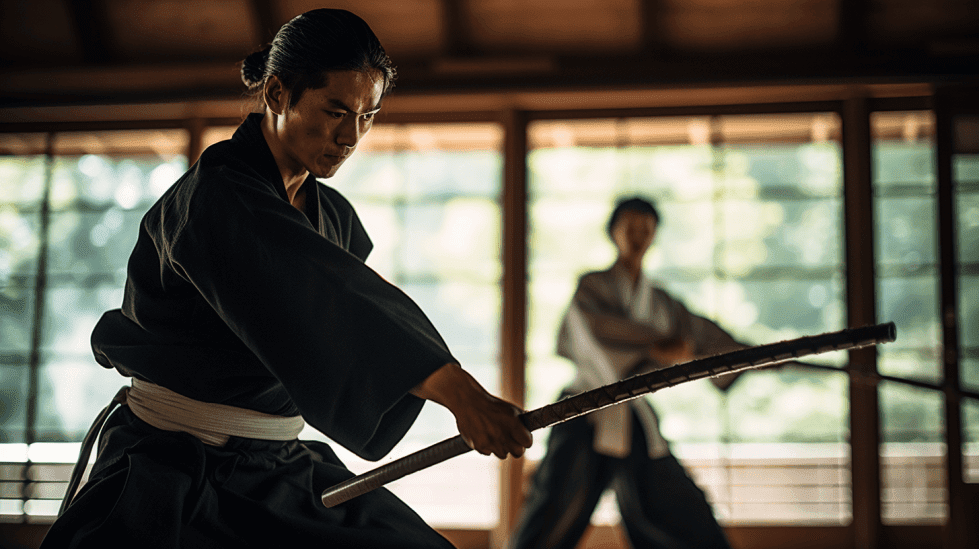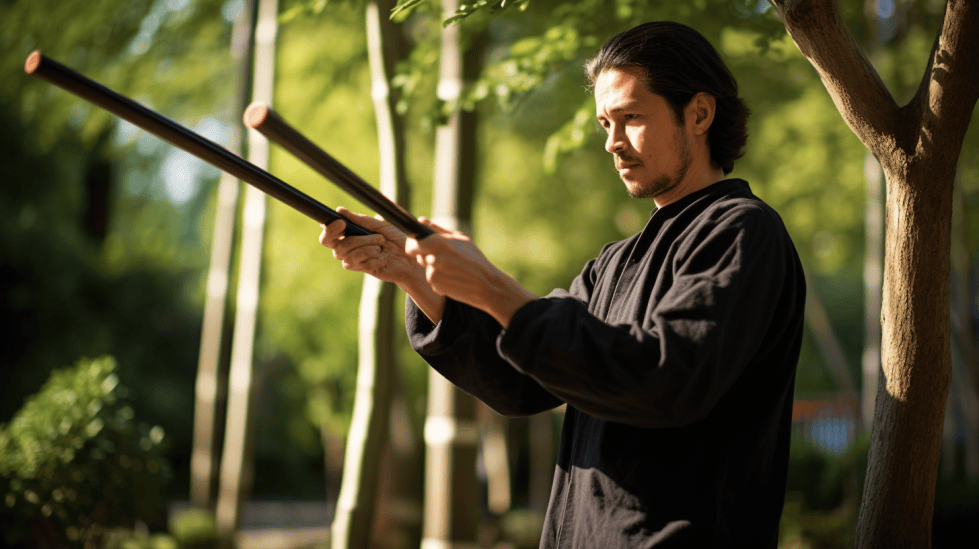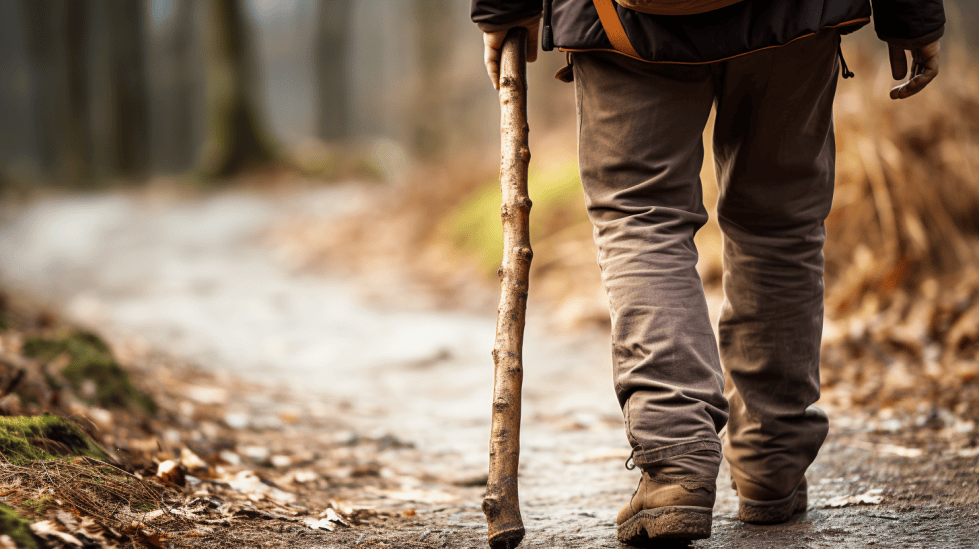Wooden Self Defense Weapons
Wooden self-defense weapons have been used by martial artists and enthusiasts for centuries. These weapons provide a safer and less intimidating alternative to their metal counterparts, making them an ideal choice for practicing techniques and improving one’s self-defense skills. As we dive into the world of wooden self-defense weapons, it’s crucial to understand their role in martial arts and how to choose the right one for your needs.
A key aspect to consider when looking at wooden weapons is their effectiveness in self-defense situations. While they may not have the same lethal force as metal weapons, they can still inflict significant damage if used properly. Moreover, wooden self-defense weapons offer several benefits over metal ones, such as being lighter, easier to handle, and often more affordable.
Selecting the best wooden weapon for self-defense is an important decision, as it should be a tool you feel comfortable and confident using. Factors to consider include the type of martial art you practice, your skill level, and any legal implications related to carrying a self-defense weapon. Now let’s summarize what we’ve discussed so far.
Key Takeaways
- Wooden self-defense weapons are widely used in martial arts for their safety and accessibility.
- These weapons can be effective in self-defense situations despite their non-lethal nature.
- Choosing the best wooden weapon involves evaluating factors such as your martial art, skill level, and legal implications.
Understanding Wooden Self-Defense Weapons

When it comes to self-defense, wooden weapons have been a trusted option for centuries. As a material, wood offers several advantages in terms of durability, affordability, and ease of use. In this section, I will discuss some popular types of wooden self-defense weapons, highlighting their unique features and effectiveness.
Firstly, wooden sticks or canes are a great choice for those seeking an inconspicuous and versatile tool. A wooden stick can be used for striking, blocking, or even trapping an attacker as seen here. Similarly, a wooden cane serves as an everyday mobility aid that can also protect the user when needed. Their unassuming appearance often catches potential attackers off-guard, giving the user an advantage in a self-defense situation.
Another popular wooden weapon is the wooden club, which can be used for striking and self-defense. Thanks to its simplicity and primitive nature, a wooden club can be easily improvised if needed. Although it may lack the precision and sophistication of other weapons, a wooden club’s sheer power can be enough to deter an attacker.
One notable wooden self-defense weapon is the Yawara, a traditional Japanese weapon that focuses on targeting pressure points and vital areas as mentioned here. This small and easy-to-carry weapon allows for quick and effective response in a self-defense scenario.
When choosing a wooden weapon, it’s important to consider the type of wood used. White oak, for example, is highly durable and resistant to wear and tear as mentioned in this article. The choice of wood will have a direct impact on the weapon’s durability and effectiveness, making it a crucial factor to consider.
In conclusion, wooden self-defense weapons come in various forms, each with their unique advantages and uses. Whether opting for a wooden stick, cane, club, or a more specialized tool like the Yawara, knowing how to wield these weapons effectively can provide a valuable means of self-protection in dangerous situations.

The Importance of Wooden Weapons in Martial Arts
In my journey through various martial arts, I’ve come to appreciate the value of wooden weapons in training. Wooden weapons play a crucial role in not only teaching martial artists proper techniques and forms but also in ensuring safety during practice. One of the striking advantages of using wooden weapons is that they can help minimize the risk of injury while offering a realistic experience.
In traditional Japanese martial arts, for instance, using wooden weapons is common practice. Bokken, a wooden sword, is often used as a stand-in for a katana, allowing martial artists to build their skills without the risks involved in using a live blade.
As a martial artist, I’ve trained with several wooden weapons, such as staffs, batons, and nunchaku. These practice weapons allow me to focus on mastering the art and techniques by providing a sense of realism and weight, without the danger of accidentally hurting myself or others.
Martial art batons, a popular wooden weapon, allow students to learn powerful striking techniques and develop their body mechanics effectively. The use of wooden weapons in martial arts also extends to other disciplines, such as Filipino Eskrima and Korean Taekwondo, offering a variety of cultural perspectives on combat and self-defense.
One of the benefits of using wooden practice weapons is their ability to provide effective self-defense without the lethality of their real counterparts. In a dangerous situation, a wooden weapon can still provide significant force to defend oneself, without resorting to weapons that can potentially cause grievous harm or even death.
In conclusion, my experience with wooden weapons in martial arts has shown me that they are not only an essential tool for training but also offer a safer and more controlled environment for self-defense practice. They help students of all levels and styles to perfect their techniques and provide a pathway for greater confidence and mastery in their chosen martial art.
Effective Wooden Self-Defense Tools
Walking Sticks and Weapon Canes
I find that walking sticks and weapon canes can be great self-defense weapons. They aid in stability when walking but can also be used as a melee weapon if needed. A self-defense cane typically has a rubber tip for better grip and can be made of sturdy wood, making it a reliable impact weapon. With proper training, a walking stick or weapon cane can be an effective and inconspicuous method for personal defense.
Sword and Jo Staffs
Wooden swords, such as bokken, and Jo staffs are popular in martial arts training. As self-defense weapons, they may not appear as threatening as a metal blade, but they can still be used effectively. With the proper technique and power, a wooden sword or Jo staff can deliver powerful strikes, making them an excellent choice for self-defense situations. Additionally, Bo staffs, longer than Jo staffs, serve as a versatile option for those who prefer to keep a greater distance from potential assailants.

Escrima Sticks and Pocket Sticks
Another wooden self-defense tool I recommend is the Escrima stick. Used in Filipino martial arts, these sticks are compact and easy to handle. They are a suitable choice for those who want a smaller and more portable option. Similarly, pocket sticks can be easily concealed and carried with you on a daily basis. Despite their small size, they can still be used to apply significant pressure to an attacker’s pressure points, making them a practical self-defense weapon to carry discreetly.
By familiarizing myself with these wooden self-defense tools and practicing proper techniques, I can feel more confident and prepared for any situation that may arise. These options offer a more inconspicuous and non-lethal alternative to traditional self-defense weapons, while still providing effective protection.
Benefits of Wooden Over Metal Weapons
In my experience and research, I’ve found that wooden weapons provide several advantages over metal weapons, especially for self-defense purposes. One significant benefit is that wooden weapons are generally lighter and easier to handle than their metal counterparts. This allows for faster and more agile movements, making them ideal for beginners or individuals who may not have the strength to wield heavier metal weapons.
Wooden weapons often serve as a less lethal alternative to metal weapons, which can be crucial in self-defense situations. With a wooden weapon, the risk of accidentally causing severe injury or death is significantly reduced compared to metal weapons. This aspect can be particularly important for individuals who wish to carry a self-defense weapon without the legal liabilities or moral concerns associated with potentially lethal force.
Another advantage of wooden weapons is that they’re less likely to make noise when dropped or bumped against objects, unlike metal weapons. This quality can be essential in situations where stealth or avoiding detection is important. Additionally, wooden weapons don’t generally have a metallic shine, making them less conspicuous and harder to spot.
On top of these practical benefits, wooden weapons have a certain aesthetic appeal that many people find attractive. The natural grain and texture of wood can give a weapon a distinct, unique character that’s hard to replicate with metal. Moreover, wooden weapons can be easily customized, carved, or painted to suit an individual’s specific tastes.
In conclusion, wooden weapons have numerous advantages over metal ones, making them a solid choice for personal self-defense. Their lighter weight, less lethal nature, and reduced noise and visibility all contribute to their suitability for use in various self-defense situations.

How to Choose The Best Self Defense Wooden Weapon
When it comes to choosing the best self-defense wooden weapon, several factors need to be considered. As a self-defense enthusiast, my primary concern is always the durability and effectiveness of the weapon. With that in mind, I will provide you with a guide on how to choose the best wooden weapon for self defense.
The first aspect to consider is the type of weapon you are interested in. Wooden weapons come in a variety of forms, including staffs, self defense canes, hiking sticks, and even batons or clubs. It is essential to identify which weapon best suits your personal defense style and requirements. For example, a hiking stick with a hidden blade can be an excellent option if you enjoy walks in nature and want to be prepared for any potential threats.
Next, durability should be a top priority when selecting your wooden weapon. After all, a self-defense tool is only useful if it can withstand the pressure of an actual attack. When searching for the most durable option, look for high-quality materials and craftsmanship. Wood types such as hickory and oak are known for their durability and strength, making them popular choices for self defense weapons.
Price is another vital aspect to consider. While it may be tempting to spend a lot on a weapon, there are still great options available at a low price. With some research and patience, you can find affordable wooden weapons that offer both effectiveness and reliability. Keep in mind that the most expensive option isn’t always the best.
Additionally, you should explore different seller portals to find the best deals and a wider range of options. By comparing prices and reading customer reviews, you can get a better insight into the quality and suitability of your chosen weapon.
Finally, don’t forget about personal preferences and comfort. As you explore different wooden self-defense weapons, take the time to consider how each weapon feels in your hands and whether it complements your preferences and abilities.
In summary, when choosing a wooden self-defense weapon, first identify the type of weapon you desire, ensure its durability, and consider your budget. Take the time to explore different seller portals and remember to account for your personal preferences and comfort. Equipped with this knowledge, you’ll be well on your way to selecting the ideal wooden weapon for your self-defense needs.

Maintaining Your Wooden Self-Defense Weapon
Keeping your wooden self-defense weapon in top shape is essential for ensuring its effectiveness and longevity. As a user of such weapons, I can confidently share some tips for proper maintenance.
First and foremost, it’s important to invest in a high-quality wooden weapon, as this can offer great value for the regular price. A well-crafted wooden self-defense weapon, such as a wooden sword, staff, or cane, should be durable and reliable.
When it comes to maintaining the integrity of your weapon, regular cleaning is crucial. I recommend wiping down the surface with a soft, dry cloth to remove any dirt or debris. If you encounter a stubborn stain, dampen the cloth slightly with water, but remember to dry the surface thoroughly afterward to prevent any moisture damage.
Inspecting your wooden self-defense weapon frequently is also important. Keep an eye on the structure and look for any cracks or splinters that might compromise its strength. If you notice any damage, do not hesitate to repair or replace the weapon, as a weakened tool might fail you in a critical moment.
If your wooden self-defense weapon has a sharp point, such as a spear, it’s vital to ensure the tip remains sharp and secure. You may need to sand or file the point occasionally to maintain its effectiveness. Additionally, be cautious while handling the sharp end to avoid accidents or injuries.
Finally, proper storage is essential. Store your wooden weapon in a cool, dry place, away from direct sunlight and extreme temperatures. This will help protect the wood from warping or cracking over time. Make sure the storage area is secure and inaccessible to children or unauthorized persons, as safety should always be a priority.
By following these maintenance tips, you can help ensure that your wooden self-defense weapon remains a reliable and effective tool in times of need.
Legal Implications and Privacy
In today’s world, self-defense is critical, and there are various types of self-defense weapons to choose from. However, it is crucial to understand the legal implications and privacy concerns associated with these weapons.
When it comes to my own safety, the use of a stun gun or pepper spray has specific legal considerations. While they are often legal for civilian use, some states or cities may impose restrictions or require permits. Therefore, it is my responsibility to know the local laws before carrying these devices.
As someone who prefers a less-lethal option, I may choose a wooden self-defense stick, an expandable stick, or a tactical pen. These weapons offer effective protection without drawing as much attention as traditional firearms. Using a self-defense stick not only provides me with a reliable means of protection but also allows a certain level of privacy, as it is often inconspicuous and doesn’t stand out as a weapon.
Another aspect of security that is important to me is ensuring the safety features of any weapon I choose. For instance, carrying a stun gun with a safety switch can help prevent accidental discharge, providing me with peace of mind as I carry it.
Privacy policies also play a significant role when purchasing self-defense weapons online. It is important to understand the retailer’s handling of my personal information to ensure that my data is secure and won’t be used for unwanted marketing purposes.
In conclusion, while owning self-defense weapons like stun guns, pepper sprays, or wooden sticks can provide a sense of security, it’s essential for me to remain aware of the legal implications and privacy concerns.

Conclusion
In my research, I found that wooden self-defense weapons can be a practical and inconspicuous option for personal safety. They are often lightweight and easy to carry, making them suitable for use during a variety of everyday activities.
Wooden weapons come in various forms, such as sticks, canes, and even training weapons. These can be utilized for striking, blocking, or even creating distance between me and an aggressor. Thanks to their non-threatening appearance, they are less likely to draw unwanted attention, especially compared to more conventional self-defense tools.
I appreciate that wooden weapons can be an attractive self-defense option for those who prefer not to carry a gun or other lethal means of protection. While I recognize that they may not be as effective in every situation, their simplicity and accessibility make them worth considering for my personal safety.
In conclusion, I’ve learned that wooden self-defense weapons present a viable option for those seeking a discreet and non-lethal means of personal protection. With proper training and care, these tools can offer me an increased sense of security in various situations.
Frequently Asked Questions
What is the most effective wooden self-defense weapon?
In my opinion, the most effective wooden self-defense weapon is the wooden stick or cane. It’s inconspicuous, versatile, and easy to handle. A wooden stick can be used for blocking, striking, or trapping an attacker, while its length provides some reach advantage over shorter weapons.
Which type of wood is best for crafting self-defense tools?
The best type of wood for crafting self-defense tools depends on the characteristics you seek. Hardwoods like oak, hickory, or maple are durable and excellent choices for making sturdy weapons. On the other hand, softer woods like pine or bamboo can be easy to shape and are lightweight, providing more flexibility in the weapon’s design.
Are wooden canes suitable for self-defense purposes?
Yes, wooden canes are suitable for self-defense purposes. They offer an inconspicuous and practical means of protection. Additionally, canes can serve as a physical aid for those who require assistance walking. Their sturdy construction and potential for customization make them a popular choice for self-defense.
What are some basic self-defense techniques using a wooden stick?
There are numerous self-defense techniques that can be utilized with a wooden stick. These include:
- Defensive stance: Hold the stick with both hands, one at each end, keeping your dominant foot forward.
- Blocking: Use the stick to intercept an incoming attack, redirecting the force away from you.
- Striking: Aim for vulnerable areas such as the knees, elbows, or head with swift, targeted strikes.
- Grappling: Use the stick to lock or trap the attacker’s limbs, controlling their movements.
Remember, consistent practice and training are essential for mastering these techniques effectively.
Can a wooden sword be efficient for self-protection?
A wooden sword, also known as a bokken or waster, can be efficient for self-protection if used skillfully. While it lacks the cutting edge of a real sword, a wooden sword’s sturdy construction and proper technique can deliver powerful strikes and serve as an effective deterrent against an attacker.
What are highly recommended self-defense walking sticks available online?
There are several highly recommended self-defense walking sticks available online. Some options include:
- The Unbreakable Walking Stick Umbrella: A discreet option, this walking stick doubles as an umbrella and features a virtually unbreakable fiberglass shaft.
- Handmade Wooden Walking Stick with Hidden Dagger: This unique item has a hidden blade inside the shaft, adding an extra layer of protection.
- Cold Steel Walkabout Stick: A heavy-duty walking stick made from durable polypropylene, designed to provide solid support and effective striking power.
Keep in mind that it’s essential to research local laws and regulations before purchasing any self-defense walking sticks, as some may have restrictions based on their features or functionalities.








